Staying in their own home as long as possible is one of the wishes most often expressed by the elderly. 77% of French seniors have declared themselves in favour of “ageing in place”, along with 90% of American seniors.
Sources : the Baromètre Autonomie Ocirp 2016, American Association of Retired Persons
But as you get on in years, your home might become uncomfortable, inadequate, even dangerous in some cases: there are 12 000 fall-related deaths each year, and 40% of them happen at night. Adapting your home is necessary, but where do you begin, and how do you proceed?
Falls among elderly people : advice, detection and prevention
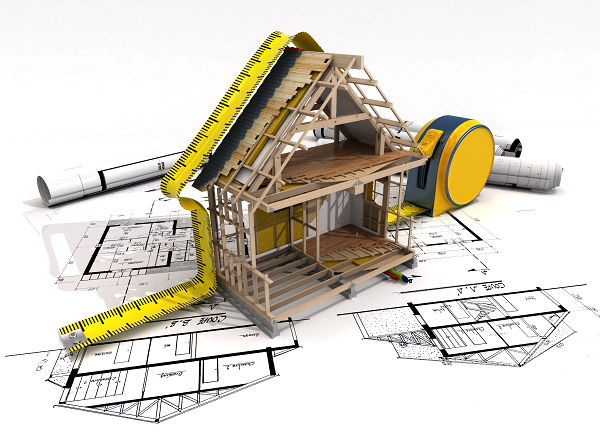
Step 1: assessing your home
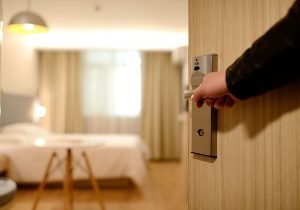 The first step towards adapting your home is to assess it. You will need to identify “risk factors” likely to impede circulation or cause accidents.
The first step towards adapting your home is to assess it. You will need to identify “risk factors” likely to impede circulation or cause accidents.
You may resort to an occupational therapist, who will assess your house and make recommendations according to the situation and the residents’ needs.
You will first need to assess accessibility:
- First is your front door: is it large enough? high enough? Is the knob placed appropriately?
- You will also need to take room layout into account, as well as stairs, stories, doors (dimensions, opening direction, doorstep…), windows (height of window and handle, roller, motorised or hinged shutters…), radiators and cupboards…
- Floors : flooring, carpets, uneven or slanted floor, etc.
- You will also need to look for potential obstacles such as electrical wires, where power sockets and switches are located, etc.
- Lighting must also be taken into account.
- You can also list which pieces of furniture are stationary and which are mobile.
Once your home has been assessed, you can start thinking of ways to adapt it. In some cases, it will only come down to some tricks; in others, you will need to set up equipment or even have some works done.
A few tricks to adapt your home
Here are some tricks to help you make your home safer :
- Rethink the layout of the rooms. For instance, if you have trouble walking and your house has several stories, you may want to relocate your bedroom to the ground floor.
- Move furniture in order to facilitate circulation within your home. You can move cumbersome pieces of furniture up against walls or leave some space between them so that you can move around without risking tripping or bumping into them.
- Adjust the height of shelves and cupboards so you can reach them more easily.
- Replace door and furniture knobs by handles that will be easier to take a hold of and turn.
- You may either get rid of doorsteps or replace them with rubber doorstep ramps in order to make them accessible in a wheelchair.
- Tape slippery carpets to the floor with double sided tape, and place some non-slip carpet pads underneath them. You could also simply get rid of them.
- Stick electrical wires onto walls so as to as to avoid tripping on them.
- Replace or shorten overly long curtains.
- Adapt room lighting : a room that is too dark makes walking around difficult.
What equipment do you need to adapt your home to an elderly or dependent person?
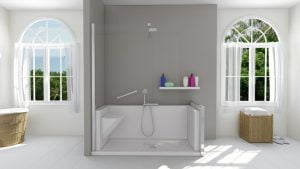 The equipment you will need to adapt your home is different for every room :
The equipment you will need to adapt your home is different for every room :
In the bathroom :
- Set up support bars to get in and out of your shower easily, or hold yourself up in front of the sink. Some support bars are aesthetical and multifunctional.
- Place non-slip carpets in the shower or bathtub or next to it.
- Place a chair or a stool in case you need to sit down to get dressed, dry your feet or clean yourself.
In the toilet:
- You can place support bars and arm rests.
- You can also set up a booster seat.
In the corridor :
- Place non-slip carpets if your flooring is slippery.
- Set up a luminous path that will allow you to walk around more easily at night.
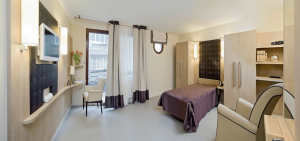 In your bedroom :
In your bedroom :
- You can place grab bars to the side of your bed in order to get in and out of bed more easily.
- You can also use booster seats to facilitate transfers.
- You can also set up a lit pathway on the floor or along walls in order to make walking to the bathroom at night easier.
In the kitchen :
- Use equipment that will allow you to grip and open items more easily, such as can-openers, electric glass jar openers, knob turners etc.
- Use adapted dishware and cutlery.
- Use non-slip table clothes.
- Favour chairs with armrests.
- Use lifting cushions if necessary.
Sometimes, some work needs to be done…
It is sometimes necessary to have more substantial work done in order to make sure your home is safe. Slippery flooring must be replaced with non-slip flooring, especially in damp rooms like the bathroom.
Bathtubs are often inadequate and cause elderly people to fall (a great number of falls and accidents occur in the bathroom). You will need to replace them.
Some companies will offer to replace your bathtub with a safe shower within a day and without having extensive work done. Kitchen furniture and cupboards must sometimes be replaced with more adequate equipment.
If your home has several stories, you might want to get a stairlift.
What technologies can you use?
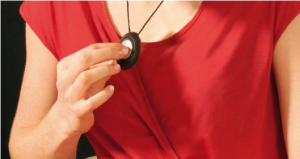 There are many Silver Economy actors who offer innovative solutions to seniors who want to stay home.
There are many Silver Economy actors who offer innovative solutions to seniors who want to stay home.
Remote monitoring solutions, for instance, can reassure seniors and their loved ones. If a problem arises, remote monitoring systems will contact professional services 24/7, generally by pressing a remote support button.
Automation solutions are also slowly becoming part of our daily lives. They rely on a range of technologies that aim to make home “smart” by automating individual and collective buildings. Automation solutions meet residents’ needs in terms of comfort and safety.
What financial aid can you get to help you adapt your home if you live in France or the UK?
Caring for a dependent person can be costly. However, financial help exist to help you adapt your home and allow you to age in place.
In France
Autonomy allowances (allocation personnalisée d’autonomie) are granted to frail people aged 60 and more living in France. They are given out by County Councils and will help you cover ageing-in-place expenses.
To receive this allowance, you will need to get your dependence level tested by a team of professionals. The AGGIR grid is customarily used. The amount you receive is determined in accordance with your dependence level and your income.
Other sources of financial exist, such as:
- Disability compensations (Prestation de Compensation du Handicap)
- Tax credits to cover for equipment expenses related to people’s needs
- Grants given out by the French National Habitat Agency (ANAH) and the National Old Age Insurance Fund (CNAV)
- If you’re in need of additional income, you can apply for the ASPA (Elderly Solidarity allowance) or the ASI (Additional Invalidity allowance)
In the UK
The British Department for Work and Pensions gives out a Personal Independence Payment to people aged 16 to 64 to pay for costs that come with impaired autonomy, be it related to long-term ill health or a disability. It replaces the Disability Living allowance.
Your dependence level will need to be frequently assessed to determine the rate.
A social worker can give you more information about existing aids and help you through administrative procedures.
Published by the Editorial Staff on

Really useful article! a good friend of mine who has MS recently went through Gainsborough to get a walk-in bath fitted in her home. Would really recommend checking them out http://www.gainsboroughbaths.com/product/walk-in-baths
Fully agree about the can openers – I wouldn’t manage without mine! I use the one touch one like this: yorkshirecareequipment.com/p/household/one-touch-can-opener/